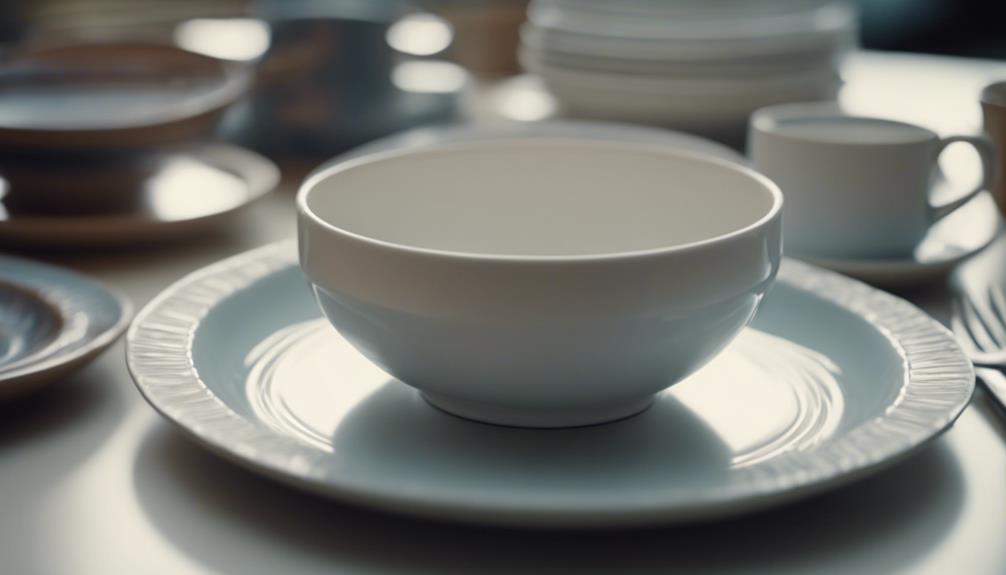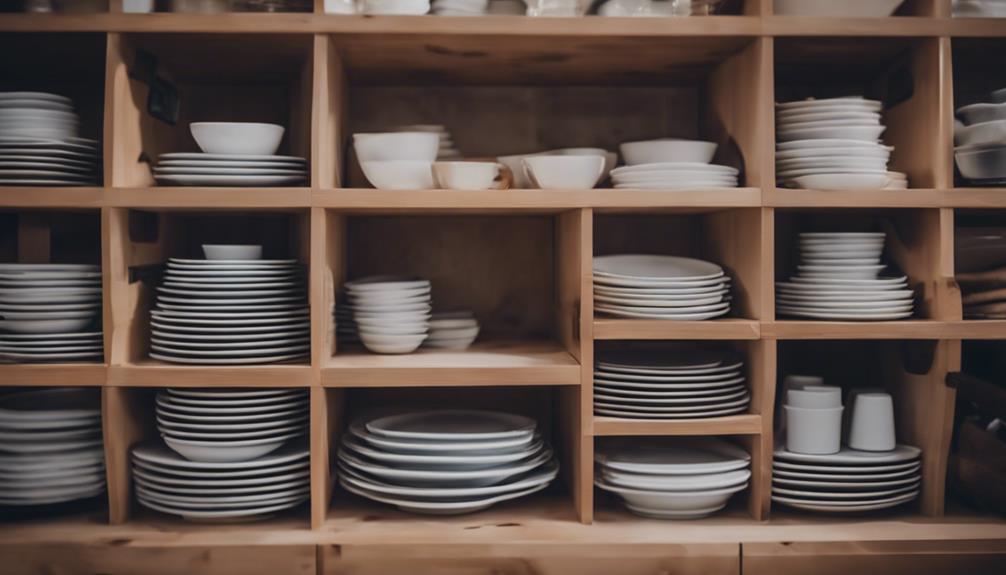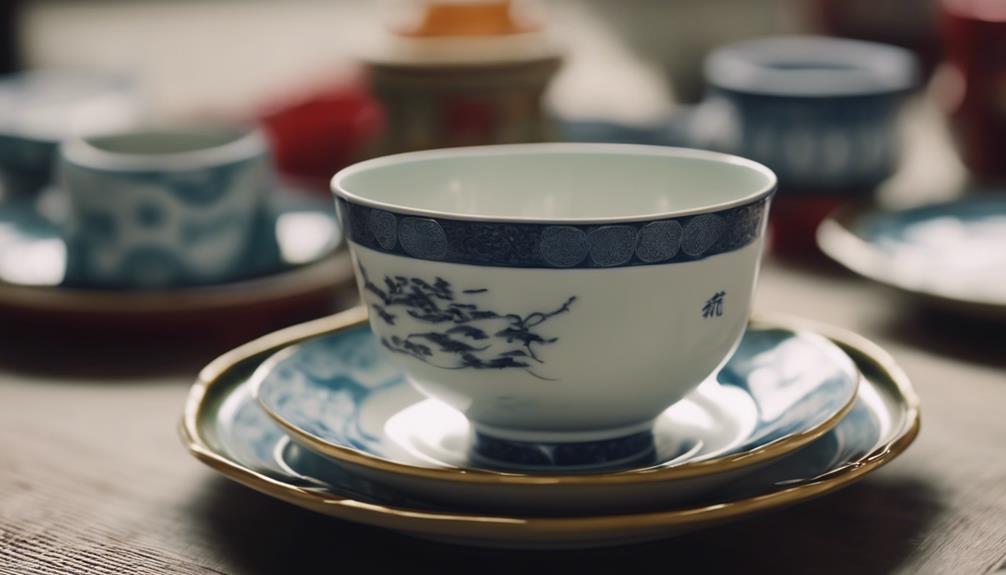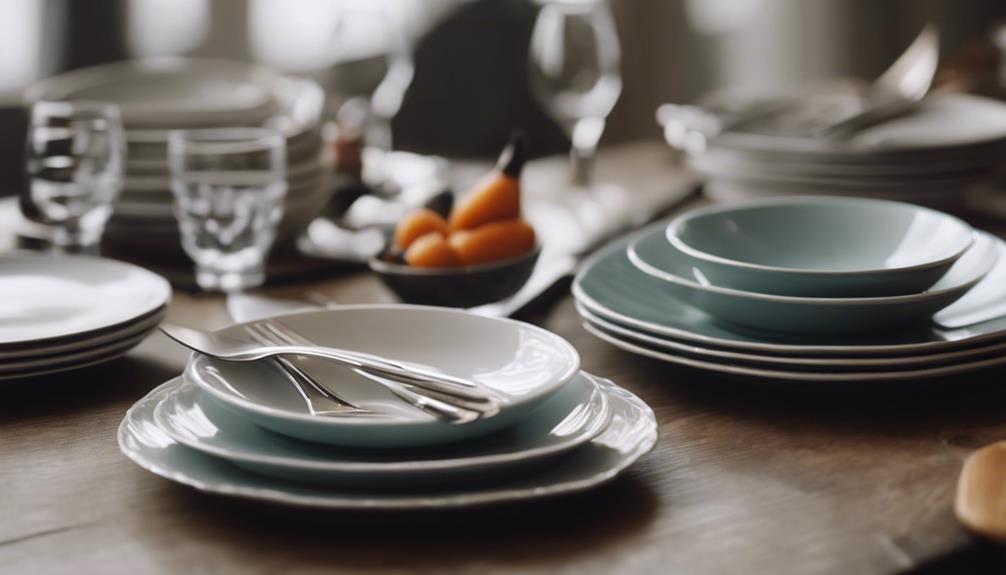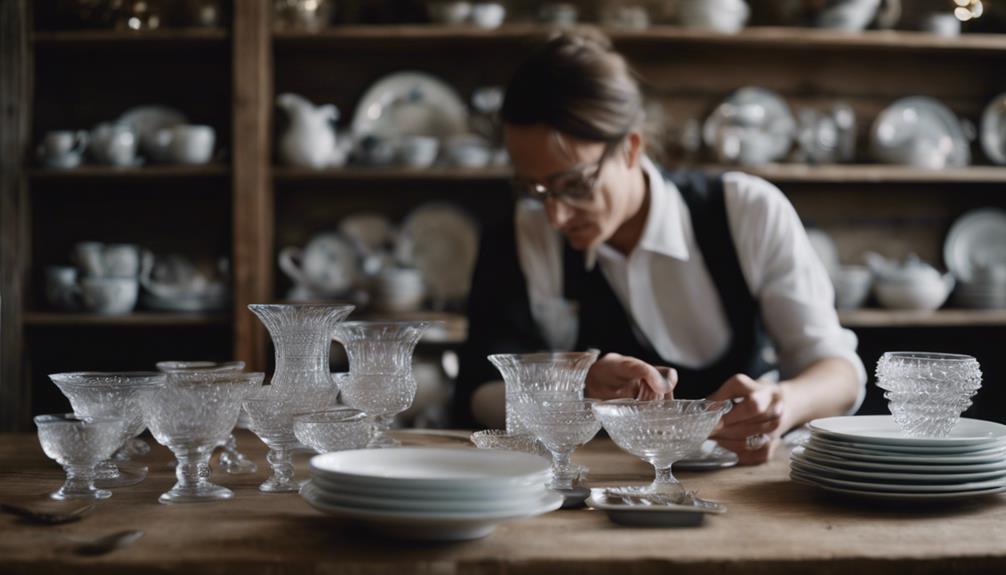When considering tableware, you have serveware, flatware, dinnerware, glassware, and tableware made from different materials. Serveware includes bowls, platters, and spoons for elegant food presentation. Flatware provides knives, forks, and spoons in various styles to properly set your table. Dinnerware includes plates and bowls for individual servings, made from china, glass, or stoneware. Glassware enhances the drinking experience, from wine to shots. Various materials like porcelain cater to different preferences and occasions. Exploring these categories will give you a better understanding of the tableware world.
Key Takeaways
- Serveware includes bowls, platters, and spoons for food presentation.
- Flatware consists of knives, forks, and spoons for table settings.
- Dinnerware comprises plates, bowls, and saucers for individual servings.
- Glassware caters to various beverages like wine and whiskey.
- Tableware materials range from porcelain to eco-friendly options for different preferences.
Serveware
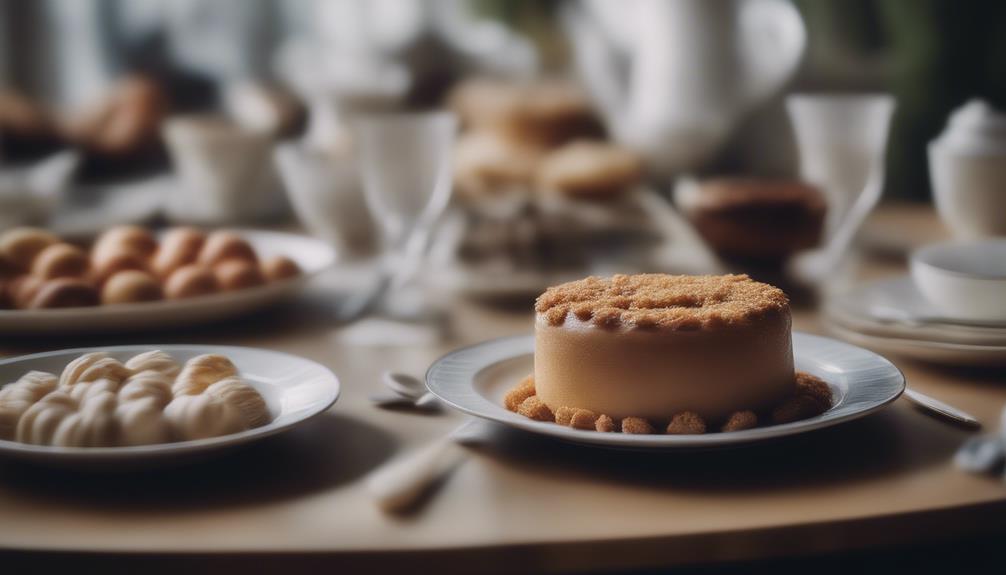
Serveware plays a crucial role in elevating the dining experience by presenting food elegantly and efficiently. Serving bowls, platters, salad bowls, and sauce boats are essential pieces of serveware that help showcase your delicious dishes. These items come in various sizes and designs to suit different types of food presentation. Serving spoons, ladles, and tongs are the handy utensils that accompany serveware, making it easy to dish out food onto plates.
Whether you're serving a salad, main course, or appetizers, having the right serveware can make a significant difference in how your meal is perceived.
Sauce boats are perfect for drizzling dressings or sauces over your dishes, adding both flavor and visual appeal. The right combination of serveware not only enhances the presentation of your meals but also keeps your dining table organized and clean throughout the meal.
Flatware
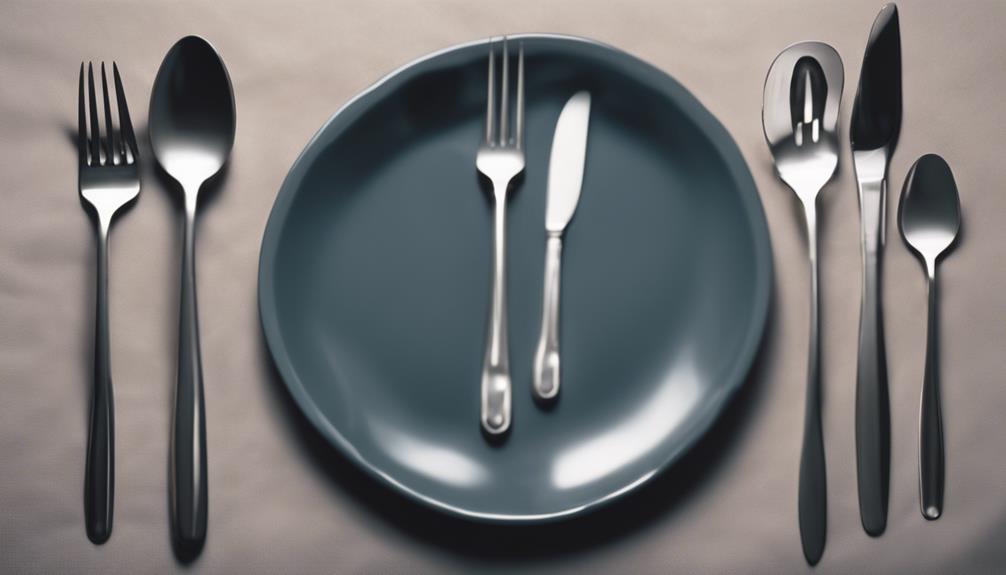
When arranging the table for a meal, one key element to take into account is the selection of flatware. Flatware includes knives, forks, and spoons, important for a complete table setting. These pieces come in various types like steak knives, dessert spoons, and dinner forks, each serving a specific purpose. Materials used for flatware range from stainless steel to silver, wood, and plastic. Different shapes and sizes cater to individual place settings and enhance the dining experience.
Flatware is essential for serving and enjoying meals, complementing plates and bowls. In a table setting, the placement of flatware can vary based on the number of courses served. Specialized varieties like luncheon knives, salad forks, fish knives, and seafood forks are tailored for specific dishes. Whether for formal dining or casual gatherings, having the right flatware is key to completing the dining experience.
Dinnerware
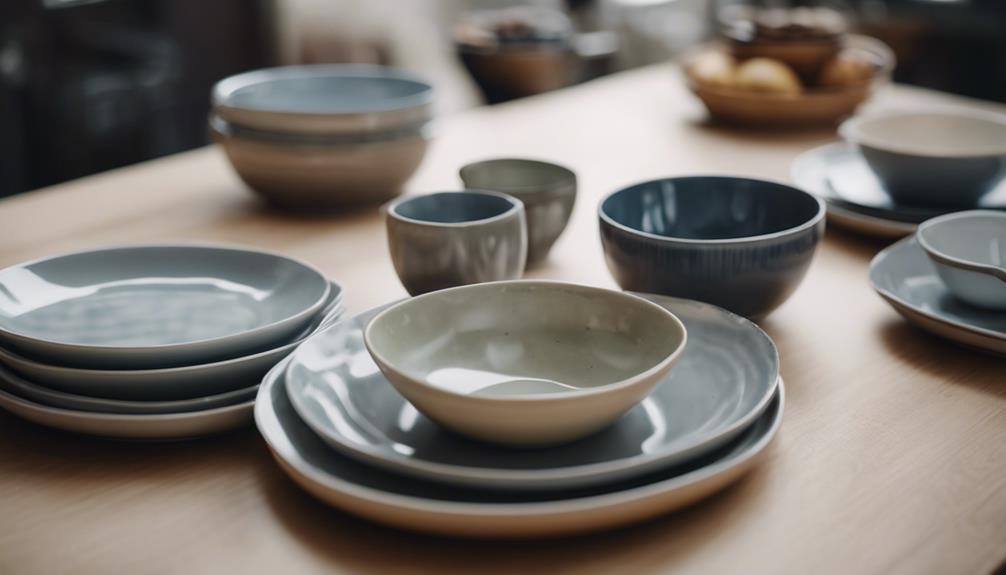
When setting a table for a meal, an essential consideration is the selection of dinnerware, encompassing plates, bowls, and saucers for individual servings.
Plates play a vital role in table settings, with different types like salad, dessert, dinner, and lunch plates catering to various courses.
Bowls are versatile pieces of dinnerware, ideal for soups, salads, or pasta.
Saucers are commonly used under teacups or coffee cups to catch drips and spills.
Dinnerware can be crafted from various materials such as china, porcelain, glass, stoneware, or earthenware, each offering unique qualities.
The choice of dinnerware is influenced by the courses served and the desired dining experience.
When combined with serveware, dinnerware contributes to creating a cohesive and aesthetically pleasing table setting, enhancing the overall dining ambiance.
Selecting the appropriate dinnerware is essential for both practicality and aesthetics in any dining setting.
Glassware
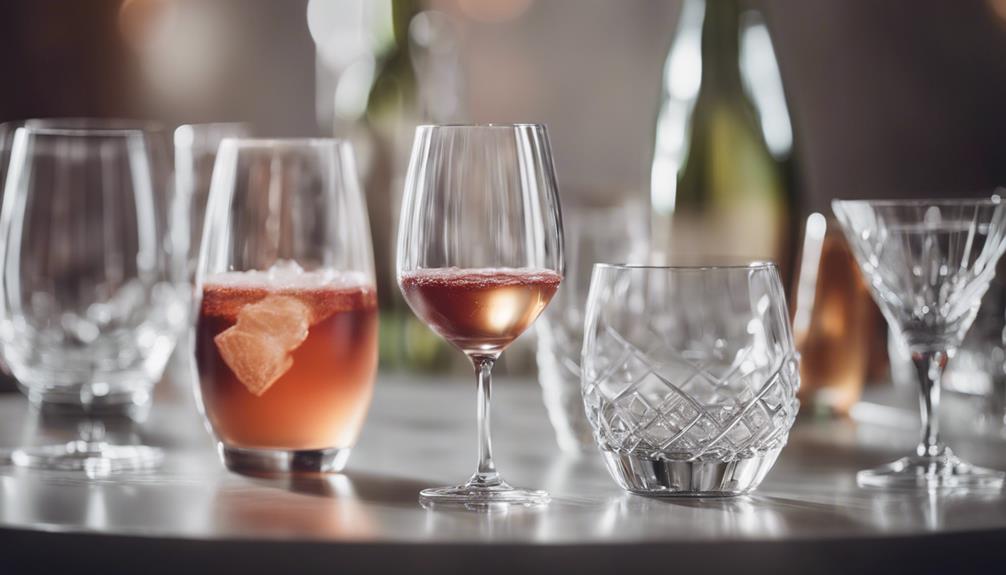
Glassware comes in various types to cater to different beverages, from wine and brandy to shots and whiskey.
Knowing the right glassware for each drink can enhance your overall drinking experience.
Stay tuned for valuable tips on caring for your glassware to keep them looking pristine.
Types of Glassware
Discover a variety of elegant stemware and tumblers designed to elevate your drinking experience. Glassware comes in different types to suit various drink preferences and occasions.
Stemware like wine glasses, brandy glasses, and champagne flutes are tailored for specific beverages, enhancing the flavors and aromas.
Tumblers such as shot glasses, whiskey tumblers, and Collins glasses offer versatility for different drinks.
Mugs, cups, and glasses in various shapes and sizes cater to individual preferences.
Selecting the right glassware can elevate the overall table setting and complement the type of cuisine being served. Whether it's a formal dinner or a casual gathering, choosing the appropriate glassware can enhance the enjoyment of your favorite drinks.
Glassware Care Tips
To maintain the clarity and extend the lifespan of your glassware, it's recommended to hand wash them rather than subjecting them to dishwasher heat. Use a soft sponge or cloth while cleaning to prevent scratches or cloudiness.
When storing glassware, keep them upright to avoid chipping and cracking, and refrain from stacking to minimize breakage. Be cautious of sudden temperature changes as they can cause glassware to crack or shatter.
Regularly inspect your glassware for any chips or cracks, and replace damaged pieces promptly to guarantee safe usage. By following these glassware care tips, you can preserve the quality and longevity of your glassware collection.
Tableware by Material
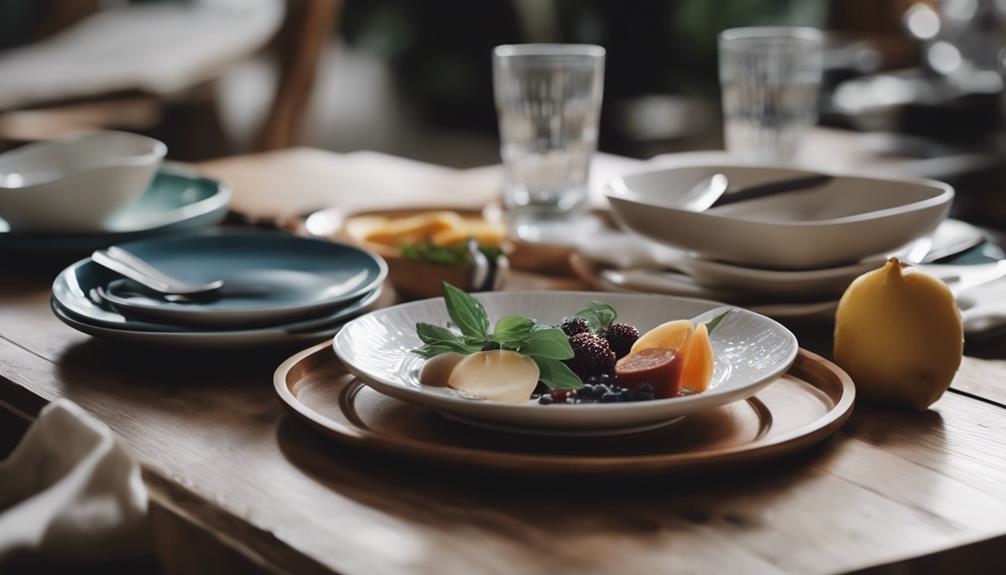
When it comes to tableware, the materials used play a significant role in determining the style and durability of your pieces. Different types of tableware materials, such as earthenware, stoneware, and porcelain, offer various design options to suit your preferences.
Understanding the characteristics of these materials can help you choose the perfect tableware for your dining needs.
Types of Tableware
Earthenware, stoneware, and porcelain are fundamental materials that offer a diverse selection of tableware for various occasions. Porcelain dinnerware exudes elegance and durability, perfect for formal dining settings.
Plasticware, made from melamine plastic, presents a non-toxic and long-lasting alternative suitable for everyday use. Natural materials like palm leaf and bamboo provide eco-friendly choices for those seeking sustainable tableware options.
Single-use tableware is a cost-effective and customizable solution for events and gatherings. Different materials in tableware cater to various preferences, occasions, and environmental concerns, ensuring there's a suitable option for every need.
Choose wisely based on your style, preferences, and the occasion at hand.
Materials Used
Amidst the array of tableware materials available, porcelain stands out as a symbol of elegance and durability, making it a preferred choice for formal dining settings.
Earthenware and stoneware offer charming options for more casual affairs, each with its unique appeal.
Melamine plastic provides a practical alternative, being durable and non-toxic, perfect for outdoor events.
For those inclined towards eco-friendly choices, palm leaf and bamboo options promote sustainability in tableware selections.
Single-use plastic tableware is cost-effective and customizable, catering well to large gatherings or events with specific branding needs.
The diverse range of materials offers something for every preference and theme, enhancing dining experiences with a variety of options.
Design Options
Exploring the design options for tableware based on different materials opens up a world of aesthetic and functional choices for various dining occasions. Earthenware offers a rustic charm, perfect for casual gatherings, while melamine plastic provides durability ideal for outdoor use.
For a sustainable touch, consider palm leaf tableware, adding an eco-friendly element to your table setting. When setting a formal table, elegant porcelain dinnerware paired with wine glasses and champagne flutes can elevate the dining experience.
Each material, whether earthenware, melamine plastic, or palm leaf, brings its unique style to the table, allowing you to customize your dining setup to suit the occasion perfectly. Experiment with different materials to create a dining experience that reflects your personal style and the mood of the event.
Western Style
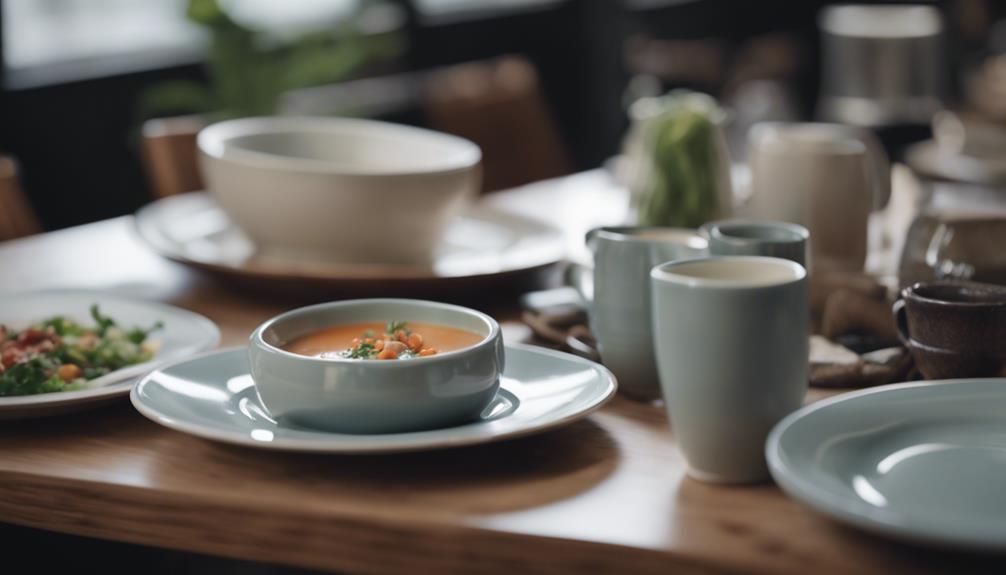
When setting a Western style table, consider the traditional methods of service à la russe and service à la française. In service à la russe, cutlery placement is based on the number of courses being served, ensuring a smooth dining experience. Different glasses for water, red wine, and white wine are essential in a Western table setting, enhancing the enjoyment of each beverage. Serving dishes like butter dishes and casseroles add a touch of elegance and functionality to the table. Place markers are handy for organizing seating arrangements at formal functions, making guests feel welcomed and valued.
| Western Style | |
|---|---|
| Cutlery Placement | Based on courses |
| Different Glasses | Water, red, white |
| Serving Dishes | Butter dishes, casseroles |
Chinese Style
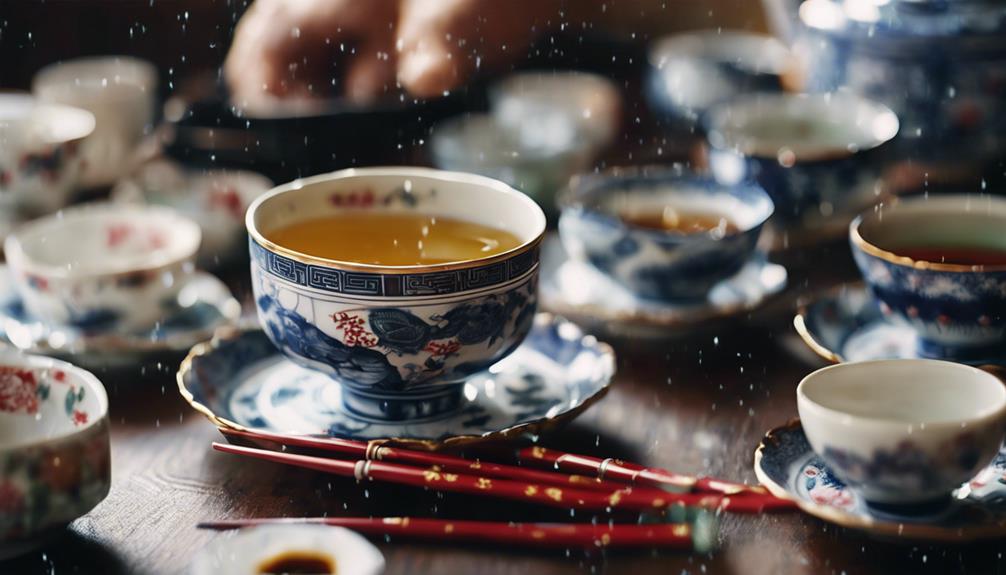
Chinese style tableware showcases intricate designs and symbolic motifs that represent prosperity, longevity, and happiness. Traditional Chinese tableware includes items such as teapots, delicate tea cups, rice bowls, chopsticks, and soup spoons. Porcelain, often referred to as 'china,' is a favored material for Chinese tableware due to its elegant look and sturdy nature.
When setting a Chinese table, you may find small dishes for condiments, communal serving plates for sharing dishes, and individual rice bowls for each diner.
In Chinese culture, table etiquette holds significant importance. It emphasizes sharing dishes among diners, using chopsticks correctly, and displaying respect for elders during meals. The symbolic motifs found on Chinese tableware aren't just decorative; they often carry deep meanings related to good fortune, health, and joy.
Japanese Style

Japanese tableware showcases minimalist and elegant designs, embodying simplicity and functionality in each piece. It often includes traditional items such as sushi plates, rice bowls, tea sets, and sake sets. These pieces are typically made from materials like porcelain, ceramic, wood, and lacquerware, reflecting cultural aesthetics. The minimalist design of Japanese tableware focuses on clean lines and subtle details, creating a sense of harmony and tranquility during meals.
One unique aspect of Japanese tableware is the art of Kintsugi, which involves repairing broken pottery with gold. This practice celebrates imperfections and the passage of time, turning flaws into beautiful accents. When using a sake set, for example, you can appreciate the craftsmanship and history behind each piece.
Japanese table setting etiquette also plays a significant role, emphasizing the arrangement and placement of tableware to enhance the overall dining experience. By incorporating these elements, Japanese tableware offers not only functionality but also a glimpse into the rich cultural traditions of Japan.
Adaptations

Adapting tableware to meet evolving needs and preferences involves exploring eco-friendly materials and innovative designs. When considering tableware adaptations, there are various options to cater to different occasions and consumer choices:
- Eco-Friendly Options: Natural materials like palm leaf and bamboo are being used in eco-friendly tableware adaptations, reducing environmental impact.
- Melamine Plastic: Melamine plastic, known for its durability and non-toxic properties, is a popular choice for plasticware adaptations in tableware.
- Single-Use Tableware: For cost-effective and customizable solutions, single-use tableware options are ideal for events and gatherings where convenience is key.
- Sustainable Materials: With a growing focus on sustainability, tableware adaptations now incorporate sustainable materials to align with eco-conscious consumer preferences, promoting a greener lifestyle.
Frequently Asked Questions
How Are Tableware Classified?
Tableware is classified into serveware, dinnerware, flatware, and drinkware based on their functions. Serveware includes serving bowls and utensils.
Dinnerware consists of plates and bowls. Flatware comprises cutlery like spoons and knives.
Drinkware includes mugs and glasses. Each type serves a specific purpose in dining settings, enhancing your overall dining experience.
This classification helps you choose the right pieces for your meals and occasions.
What Is Tableware and Examples?
Tableware includes serveware, dinnerware, flatware, and drinkware for serving and dining.
Serveware like bowls, platters, and pitchers are essential. Dinnerware consists of plates, bowls, and specialty dinnerware in materials like melamine or porcelain. Flatware includes spoons, forks, and knives. Drinkware comprises mugs, cups, and glasses in various shapes and sizes.
These items are vital for setting a table and enjoying meals comfortably.
What Is the Oldest Tableware?
The oldest known tableware dates back to ancient civilizations like the Mesopotamians, Egyptians, and Greeks. Early tableware consisted of simple pottery vessels like cups, plates, and bowls.
Archaeological findings reveal intricate designs and patterns on ancient tableware pieces, often with symbolic or religious significance in various cultures.
The evolution of tableware reflects the development of human civilization and cultural practices over time.
What Are the Different Types of Dinnerware Plates and Their Specific Uses?
When it comes to dinnerware plates, you've got a variety to choose from.
Salad plates are perfect for starters, while dinner plates handle the main course like champs.
Dessert plates are just the right size for a sweet ending, and lunch plates are great for lighter meals.
Each plate has a specific job in the dining experience, making sure your meal is served just right.
What Are the Different Types of Tableware That Make Up the Basic Types?
Understanding tableware essentials is crucial for setting a proper table. The basic types include dinner plates, salad plates, bowls, and various glassware. Flatware like forks, knives, and spoons are also important. Additionally, the tablecloth, napkins, and placemats add a decorative touch to the overall table setting.
Conclusion
So, now that you know the basic types of tableware, you can impress your guests with the right pieces for any occasion.
Keep in mind the style, material, and cultural influences when setting your table. Whether you prefer Western, Chinese, or Japanese styles, there are tableware options to suit your taste.
Keep exploring and experimenting with different tableware to create the perfect dining experience every time. Enjoy the journey of discovering the world of tableware!
